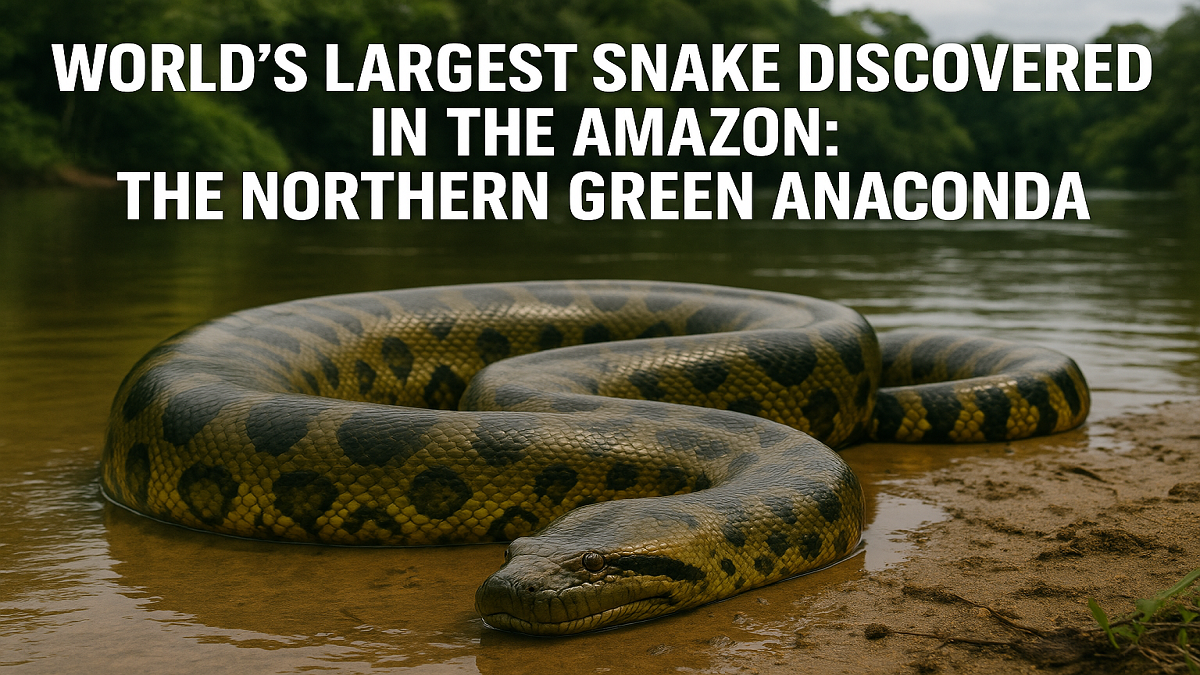The Amazon rainforest, known for its rich biodiversity and hidden mysteries, has once again astonished the scientific world. Researchers have recently uncovered a new species of giant snake that surpasses all previous records in both size and weight. This new discovery sheds light on how much of the natural world is still unknown — and why preserving it is more important than ever.
Diversity of Snakes Around the World
Globally, there are approximately 3,971 known species of snakes, with around 600 species classified as venomous. These reptiles are found in nearly every part of the world, adapting to a wide range of environments. Some, like the king cobra, are notorious for their venom, while others, such as pythons and boas, are constrictors that kill their prey by suffocation.
The Anaconda: The Myth and Reality
The Anaconda has long fascinated people, largely thanks to Hollywood films that depicted it as a monstrous, nearly mythical creature. Until recently, the Green Anaconda (Eunectes murinus) was considered the heaviest and one of the longest snakes known to science. Though many sightings and legends have suggested the existence of larger snakes, those claims lacked scientific verification — until now.
A New Discovery: The Northern Green Anaconda
In a groundbreaking expedition, scientists have discovered a new species of anaconda in the Amazon, named the Northern Green Anaconda (Eunectes akayima). This serpent is not a figment of imagination, but a real, documented creature that surpasses previous size records.
Record-Breaking Size and Weight
The newly discovered Northern Green Anaconda measures an astonishing 26 feet (approx. 8 meters) in length and weighs around 500 kilograms (over 1,100 pounds). This makes it the largest and heaviest snake ever recorded in scientific history.
Where Was It Found?
This incredible discovery was made in the Bihueri Waorani Territory of Ecuador, deep within the Amazon rainforest. It was part of a documentary project for National Geographic’s Disney+ series Pole to Pole, where scientists collaborated with the indigenous Waorani people who have deep knowledge of their land and its wildlife.
Scientific Significance of the Northern Green Anaconda
The discovery has not only broken records but also provided key insights into snake evolution. According to a report in the journal Diversity, there is a 5.5% genetic difference between this new Northern Green Anaconda and its closest relative, the Southern Green Anaconda.
A Deeper Genetic Divide
To put this into perspective, the genetic difference between humans and chimpanzees is only about 2%. The 5.5% variation between the two anaconda species indicates that they diverged around 10 million years ago, representing a significant evolutionary split.
Ecological Importance and Conservation Concerns
The Amazon, while home to these incredible species, is facing severe threats from deforestation, pollution, and climate change. These forces are altering the delicate balance of this ecosystem and endangering not only snakes like the anaconda, but countless other species as well.
A Race Against Time
This discovery comes at a crucial time. The existence of such a massive, previously unknown creature reminds us that vast portions of the Amazon remain unexplored. It is a wake-up call for the scientific community and policymakers to accelerate conservation efforts before these hidden marvels disappear forever.



 Bhartiya Bhasha Utsav 2025: Celebrating ...
Bhartiya Bhasha Utsav 2025: Celebrating ...
 Starlink Internet: Revolutionising Globa...
Starlink Internet: Revolutionising Globa...
 Google 2025: Top Searches by Indian User...
Google 2025: Top Searches by Indian User...







